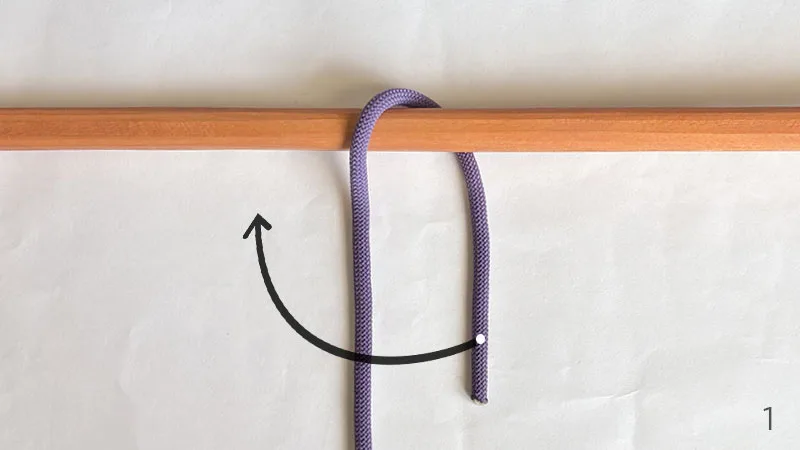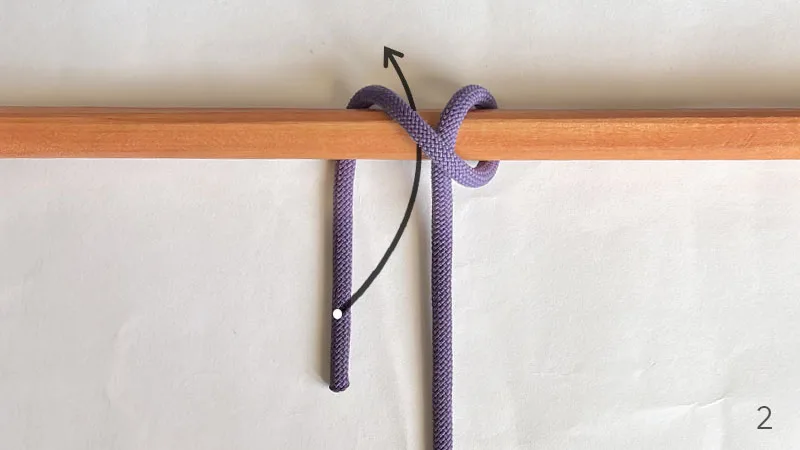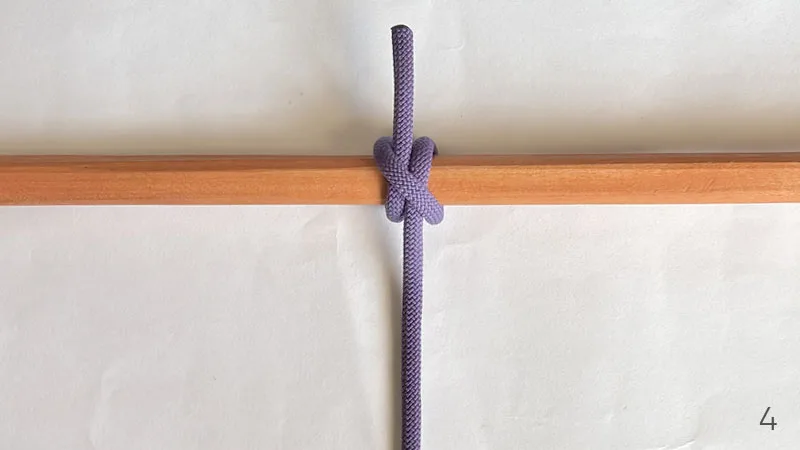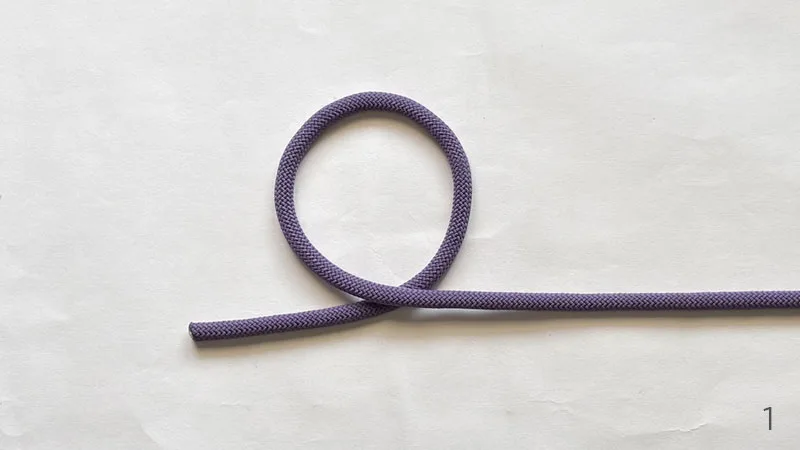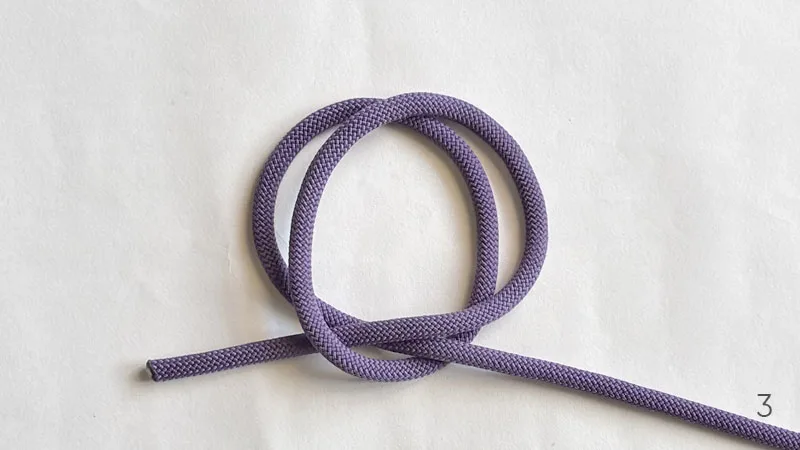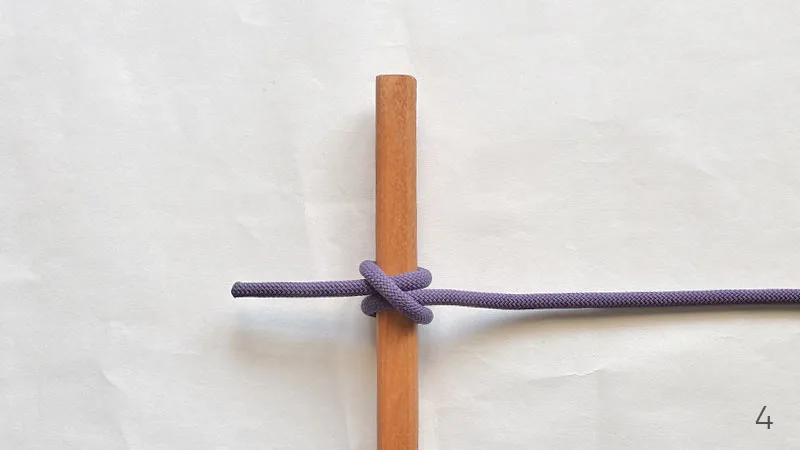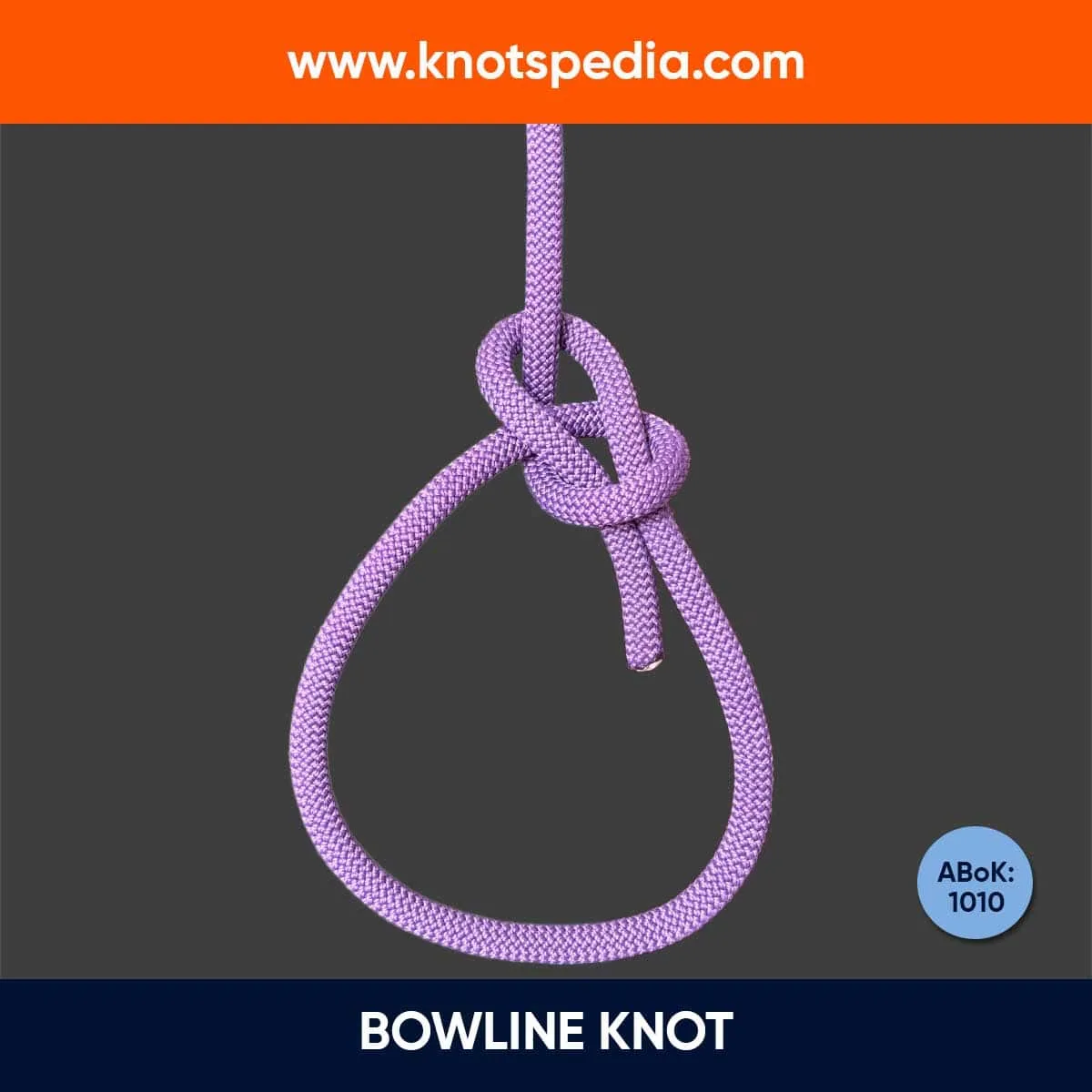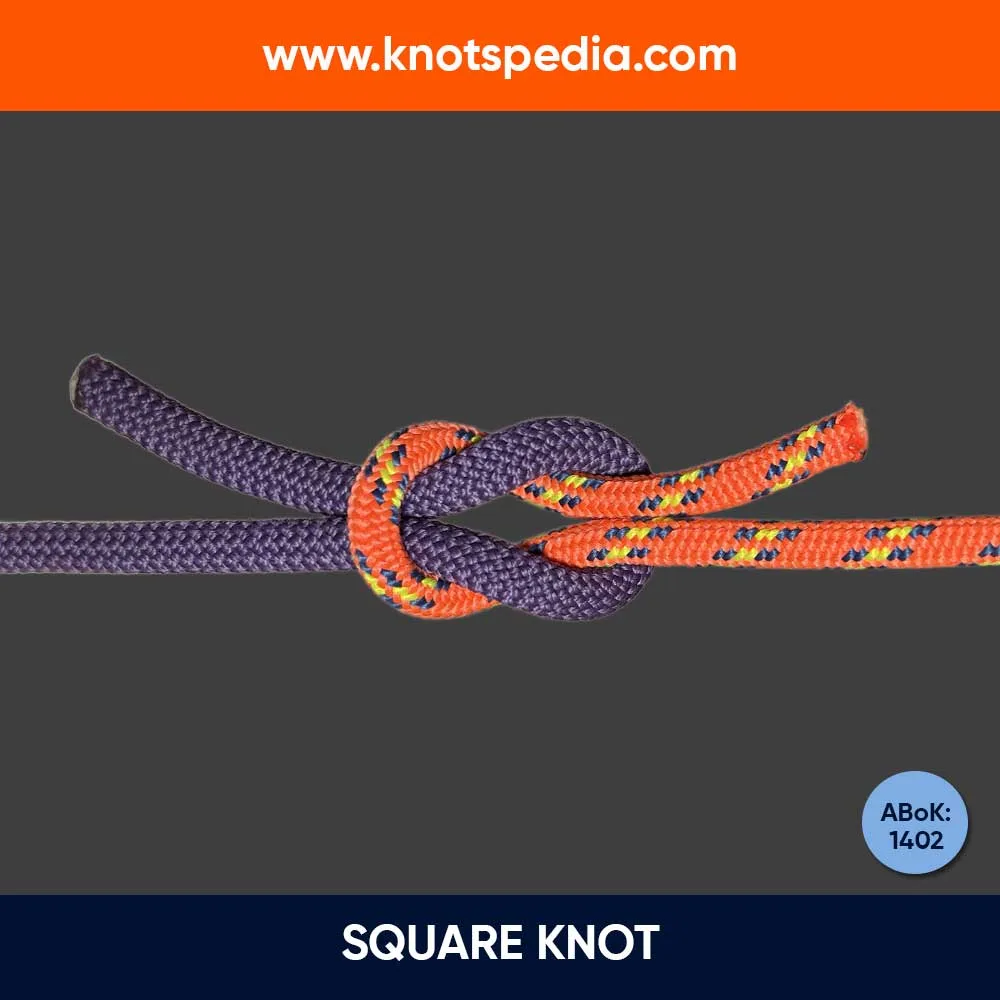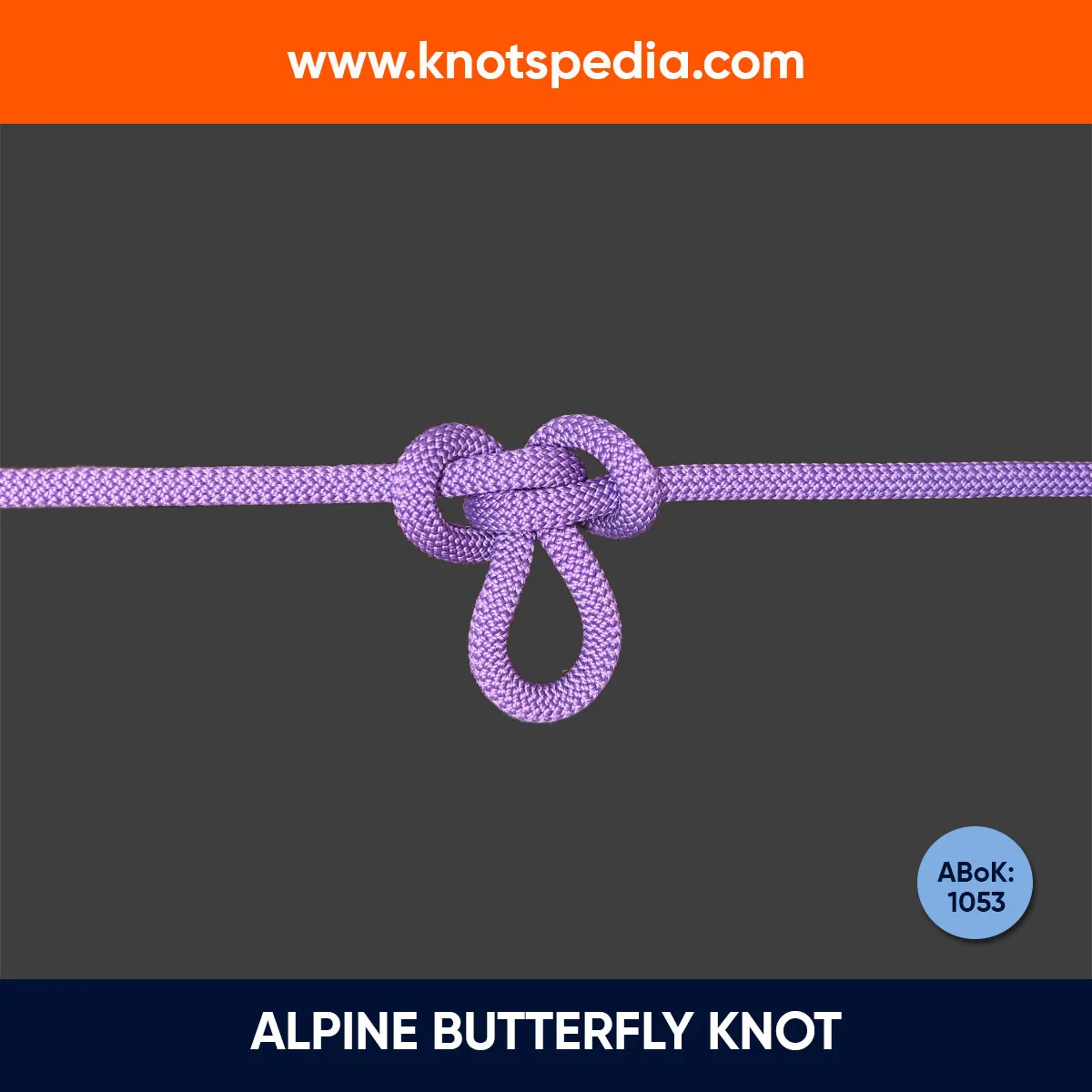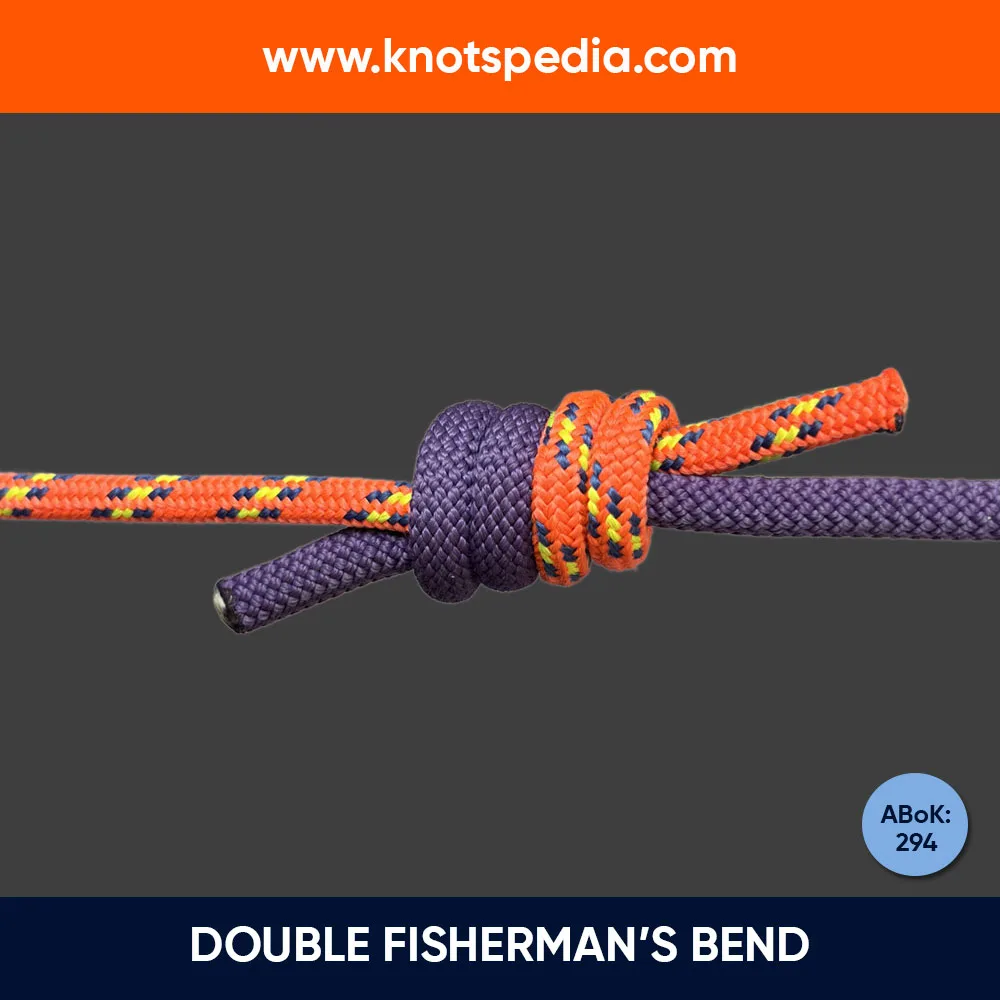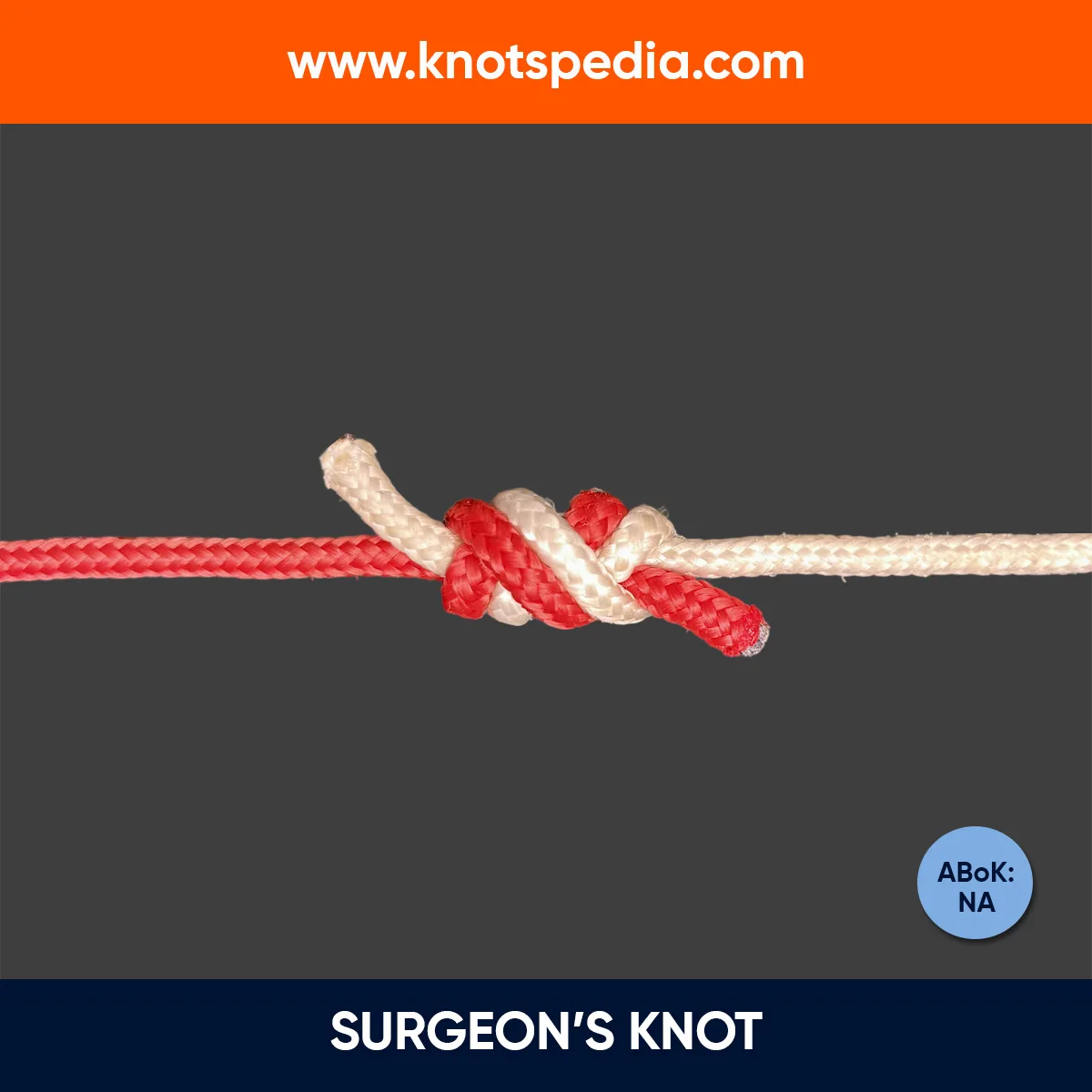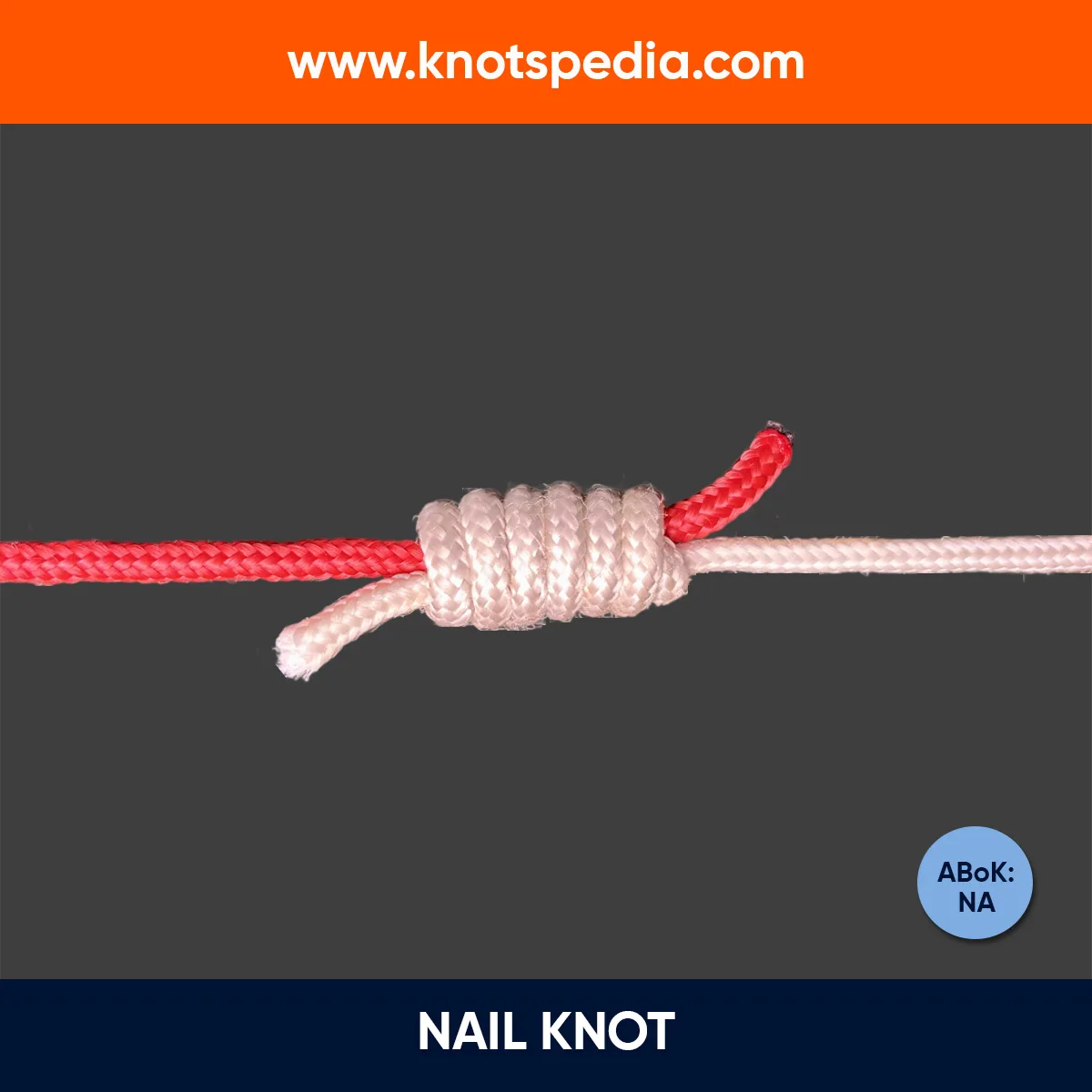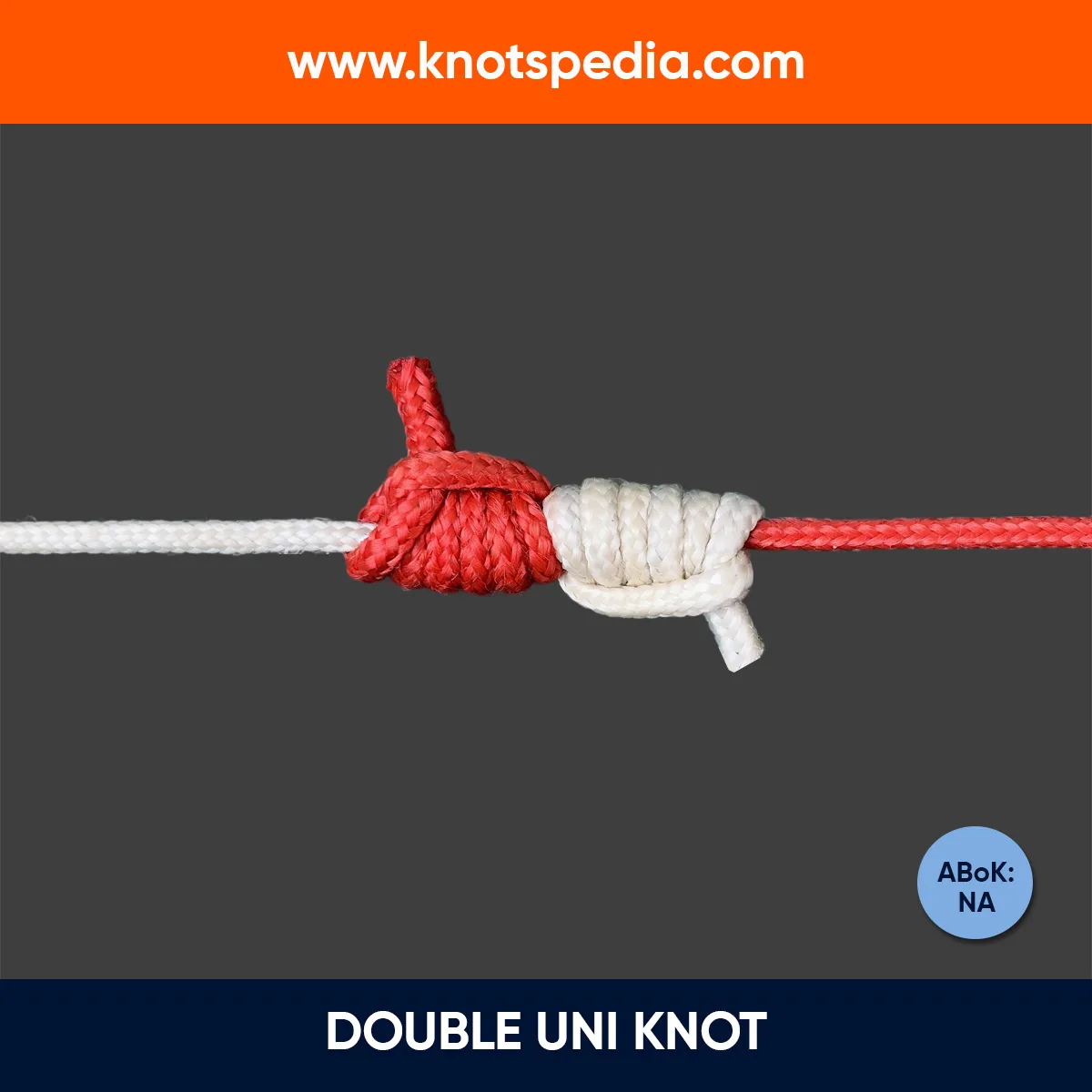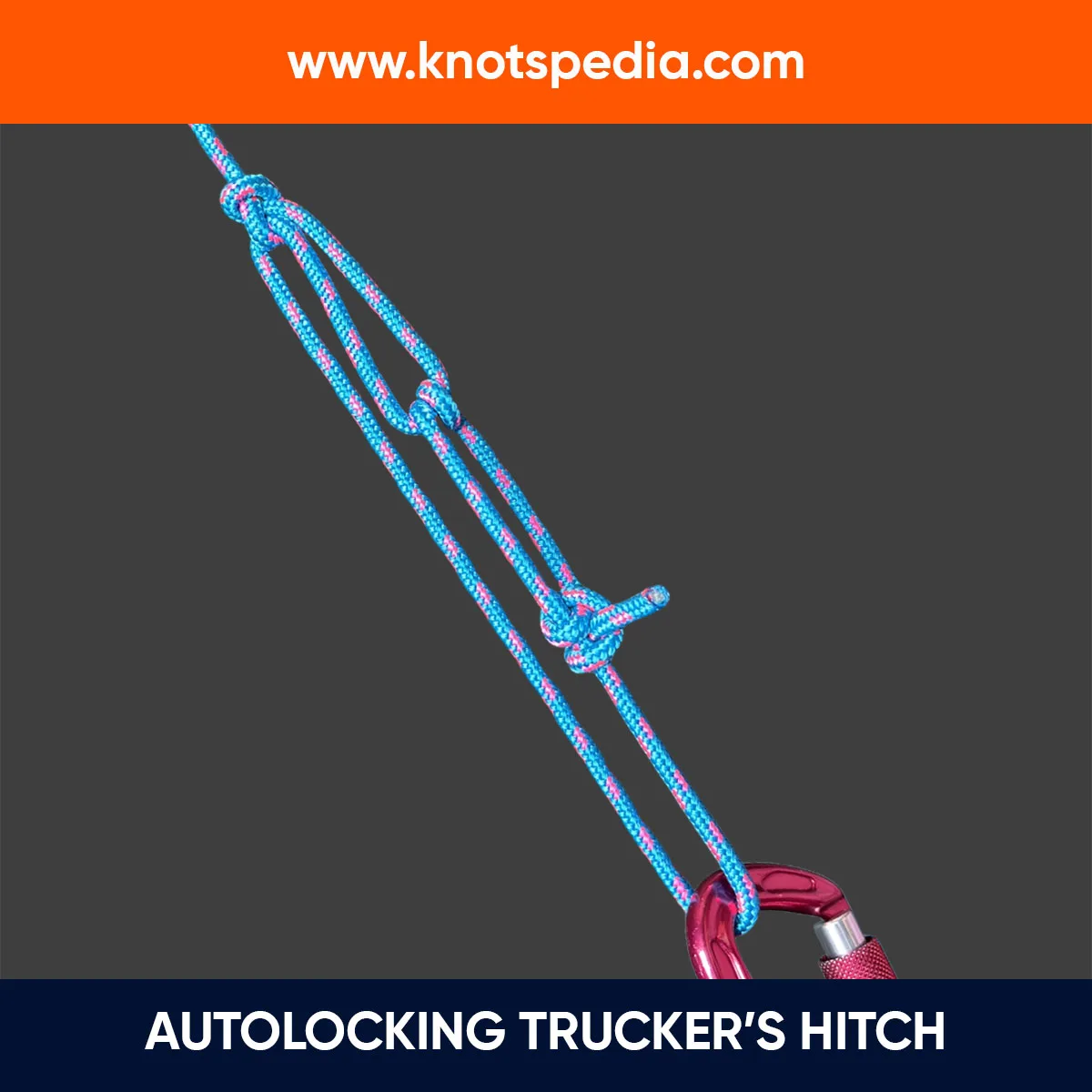The Clove Hitch is one of the most common knots people learn to tie, along with the Bowline and the Sheet Bend.
It’s tied with two successive Half hitches around cylindrical objects like trees, posts, or carabiners.
It’s not the strongest of the knots when used as a binding knot, but it is most effective as a crossing knot.
Let’s learn this hitch in detail.
Clove Hitch Details
Type: Hitch Knot
Other Names: Double Hitch
ABoK reference: #1178, #1245
How to Tie a Clove Hitch
Method 1: Rope End Method
This method can come in handy when you need to tie a hitch around an object like a tree or a post.
- Pass the rope around the object.
- Loop around the object with the end.
- Pass it from behind the rope.
- Pull to tighten the knot.
You have tied this correctly if you have both lines in the opposite direction with a diagonal line crossing the two.
To untie, just push both ends together, and the knot will come apart easily.
Clove Hitch Step by Step (Rope End Method)
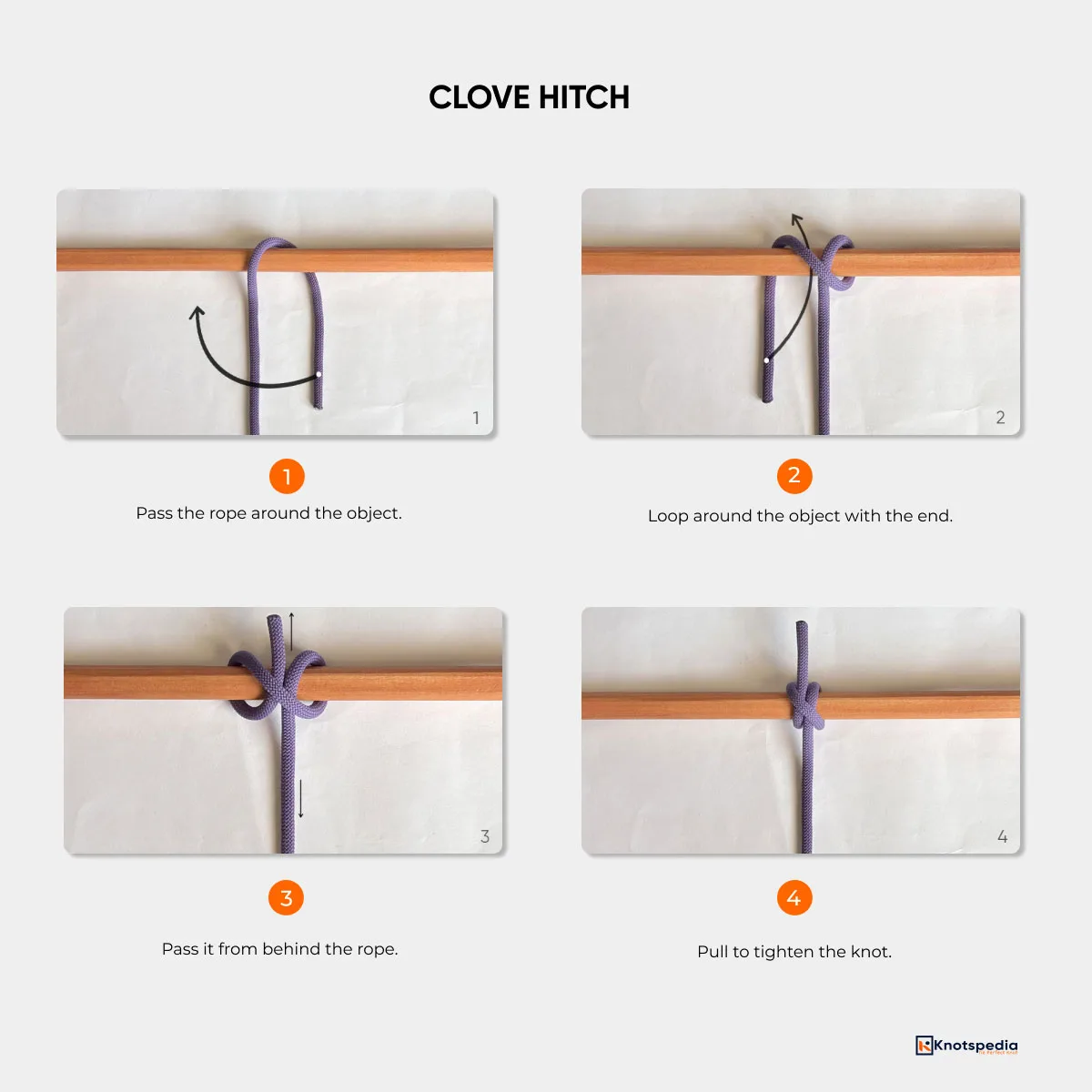
Method 2: Open End Method
This method is helpful if you don’t have the end of the rope and only have the middle section of the rope.
In the Ashley Book of Knots, it is mentioned as Clove hitch tied on the bight (ABoK #1178).
It is mostly used in climbing.
- Make an Overhand loop in the rope.
- Make a second Overhand loop similar to the first one.
- Cross the loops such that the ropes intersect and not sit on top of each other.
- Put it over the post and tighten.
Clove Hitch Step by Step (Open End Method)
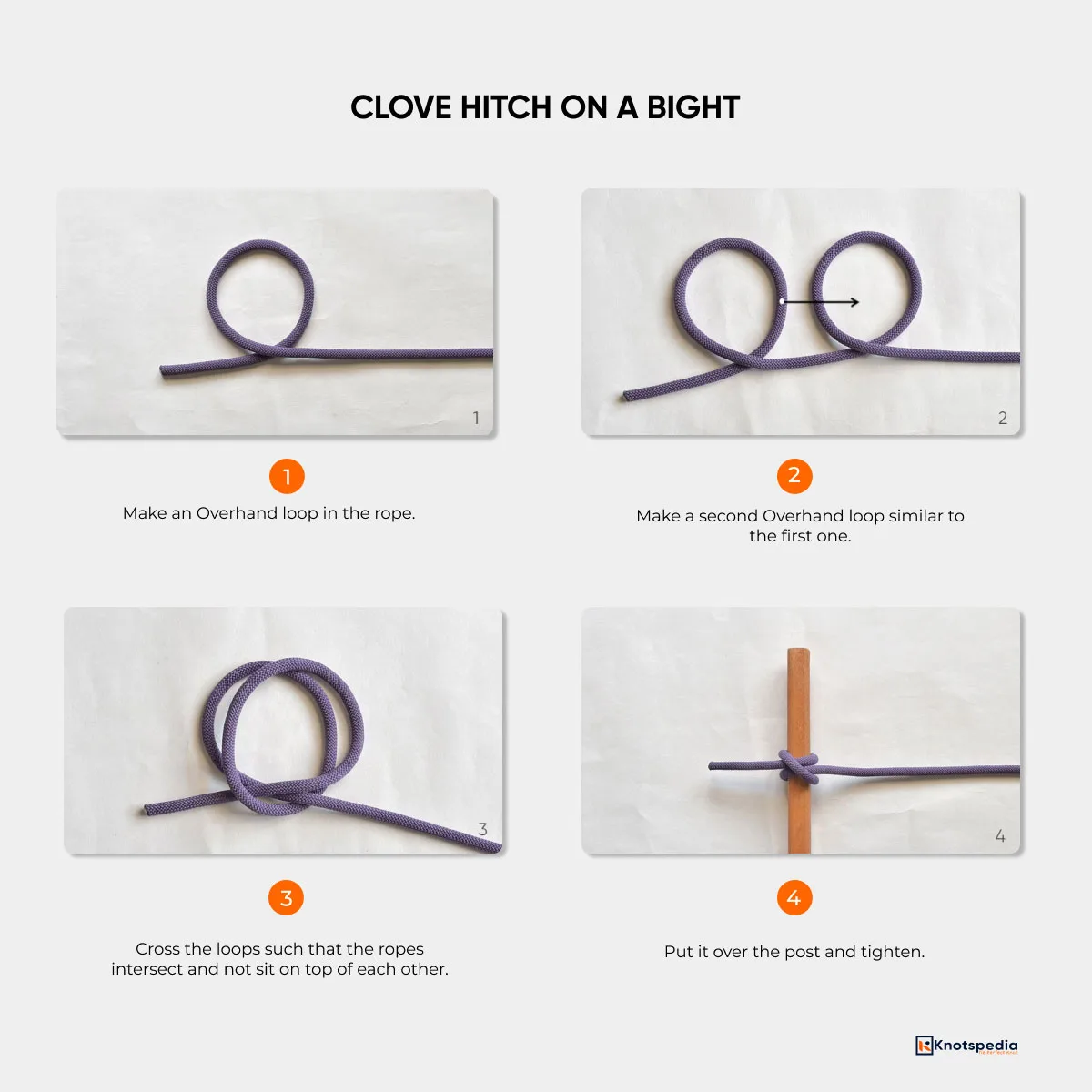
Pros & Cons
- Easy to tie and untie
- Easy to adjust
- Can come undone when there is no tension on the line
- Can spill if the standing end is pulled in the wrong direction
- Can slip and bind
Application and Uses
- Rock Climbing: Secure the rope to the carabiners. It is mostly helpful because it can be tied with a single hand, with one hand holding onto the anchor and the other one tying the knot.
- Boating: Tie a fender to a rail. An extra two Half Hitches are tied around the standing end to make the knot more secure.
- Lashing: As a crossing knot and to start or finish a lashing, such as Square, Diagonal, or Shear lashing.
- Theater: Adjust the height of the stage curtains hanging from a bar.
- Camping: Secure your food and bags in a tree when you set up camp. You can even set up the hammock or teepees using this hitch.
- Macrame: Often used as a crossing knot in macrame works that become decorative wall hangings.
- Medical applications: Create a secure knot for an arm sling in case of injuries, with the weight of the arm keeping the knot taut.
Securing the Clove Hitch
Add a Half Hitch Knot
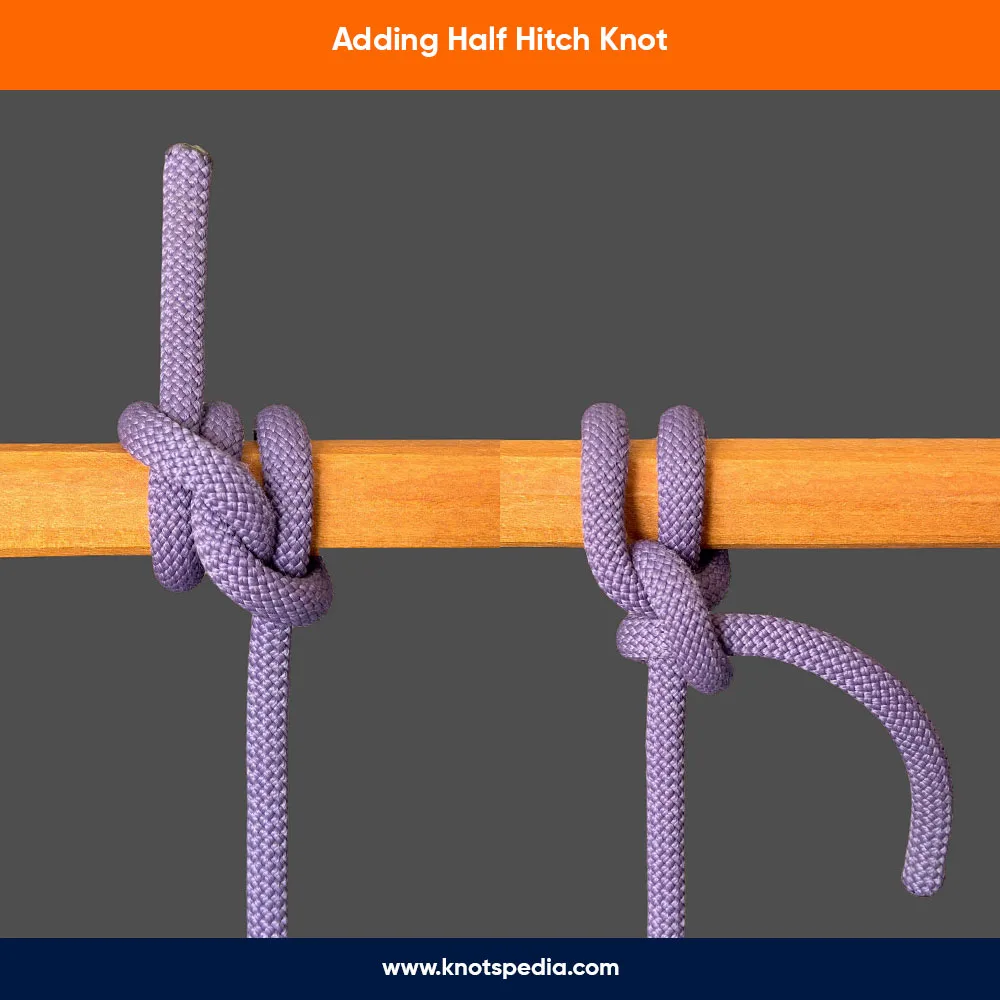
If you want to increase the security of this hitch, add an extra Half Hitch around the railing itself or around the standing end.
This will help prevent slipping, which is an inherent downside of the knot.
Double Clove Hitch

Another way to increase the security of this knot is to add an extra rope turn around the object (not the standing end) to modify the hitch.
The modification increases the strength and safety of the knot.
Related Knots
Slipped Clove Hitch
It is the slipped version of the Clove Hitch Knot.
In this version, instead of inserting an end in the last step, you pass a bight of rope.
It is not the most secure version of the knot, but it makes an excellent quick release knot for the temporary attachment around the object.
Sliding Clove (Rolling Hitch)
There are two versions of the Rolling Hitch as mentioned in the Ashley Book of Knots—Rolling Hitch 1 (ABoK #1734) and Rolling Hitch 2 (ABoK #1735).
The Rolling Hitch 2 resembles with the Clove Hitch, but it has an extra turn wrapped around.
It works as a simple friction hitch that is used for lengthwise pull along an object rather than at right angles.
Two Half Hitches
The Two Half Hitches and the Clove Hitch knot are almost identical in structure.
The difference is that in the Clove Hitch, the Half hitch knots are tied around an object like a spar, while the Half Hitch knots are tied on the standing part in the case of the Two Half Hitches.
To sum up, Two Half Hitches are the Clove Hitch tied around the standing end.
It is used by the sailors to tie a mooring line to boats or docks.
Round Turn and Two Half Hitches
The Round Turn and the Two Half Hitches is the secure version of the Two Half Hitches.
An extra round turn takes all the tension in the line which makes it easy to tie the two Half Hitches.
It is used to secure a line to a post, tree, or ring.
Constrictor Knot
The Constrictor Knot (ABoK #1249) is an ultimate transition from the basic simple crossing knot, i.e., Clove Hitch to the almighty binding knot.
It is like a Clove Hitch, but the tag end is passed under the intersection of the two adjacent loops (riding turn) in the last step.
Most of the time, this knot is intended to be permanent, and it is extremely difficult to untie once you’ve tightened it.
Clove Hitch vs Constrictor Knot
The Clove Hitch and the Constrictor Hitch are almost identical except for one small but very important difference.
The Clove Hitch will hold things together reasonably well but is easy to undo.
The Constrictor Knot will hold things together extremely well, but can be very difficult to undo.
If you look at the structure, both look like an identical knot, but there is a subtle difference.
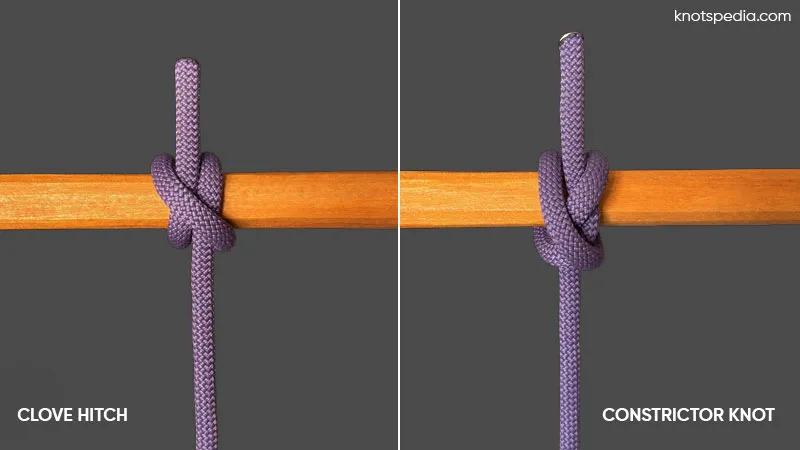
The Constrictor Knot is a Clove Hitch, but it has one end passed under the other, forming an overhand knot under a riding turn.
The Constrictor Knot works best when used as a binding knot, whereas the Clove Hitch works best when used as the crossing knot.
Words of Caution
The Clove Hitch is not a knot to be used alone. It’s an average binding knot, so when you use it as a hitch, it should be used for temporary or non-load bearing applications.
The knot has the tendency to slip or come undone if the object it is tied to rotates or if constant tension is not maintained on the line.
It’s even less secure when tied around a rectangular or square-shaped post.
In some cases, the adjustable nature of the hitch can also be a problem. In some rope materials, it slips when you add a load.
Quick History
According to the Ashley Book of Knots, the name Clove Hitch was given by Falconer in his Dictionary (1769).
But, its origin can be traced back to the first quarter of the 16th century, when it was used to tie the ratlines.
It was depicted in the early paintings and sculptures.
Over the years, it has evolved into a go-to knot for every knot enthusiast alike.
Related Questions
How secure is the Clove hitch?
The Clove Hitch is not among the most secure knots. It has an efficiency of around 60%.
It is only secure when there is tension on the line; otherwise, the hitch is prone to slipping.
Is Two Half Hitches a Clove hitch?
The Two Half Hitches and the Clove Hitch are two different knots.
In the Two Half Hitches, you fasten the rope around the standing part, while the Clove Hitch fastens around the object.
That’s it for this article. If you found this helpful, spread the word!
Bookmark it for later and share it on social media or with your friends, family, and colleagues.
